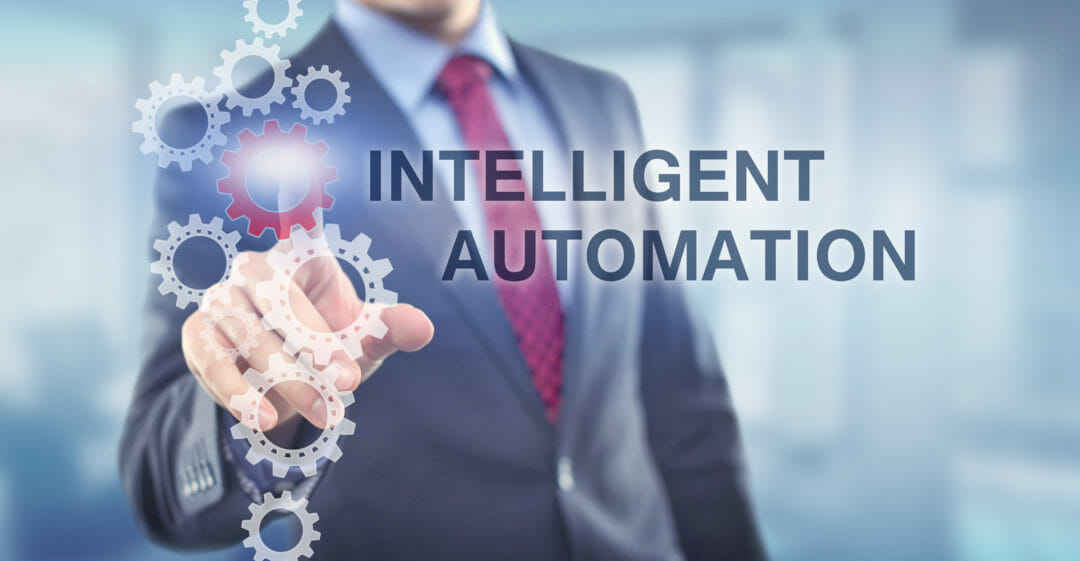In this current challenging climate, there’s a real desire across global boardrooms to digitally transform work so it’s performed much faster, smarter, more efficiently – with less resources than before. An increasingly logical route to achieving these goals is the adoption of intelligent automation that runs a digital workforce; an AI-powered, ever-evolving, super resource that’s business-ready and IT approved. That’s a workforce of digital workers ready to be trained by business people to deliver ever more complex work, not just across the front, middle and back office – but across the entire enterprise – in any industry sector.
It operates with total integrity and up to 150 times faster than people, with zero errors, 24/7. This digital workforce is getting ever closer to humans by learning from and operating like them. It’s a workforce that’s easily trained and put to work by people, then re-trained for fresh work, while freeing people to work with them, or do more work that suits their innate skills better.
Digital workers are the ultimate team players, sharers and managers of vast workloads and, unlike any other robot, they proactively work by interweaving AI capabilities to inter-operate effortlessly across ever-changing digital environments – without fail. They can read different screens, layouts or fonts, application versions, system settings, permissions and language. They ingest and sort semi-structured and unstructured data from any source, across all IT systems, while providing quality checks, detecting errors and passing exceptions to people for input.
The importance of data storytelling in the next decade of data
Digital workers also uniquely access and read the user interface of any current and even future technology – without requiring coding. It’s this universal interoperability capability that enables any new technology – especially from our ‘Digital Exchange’, to be easily business-consumed, safely tested and swiftly drag-and-dropped into enterprise process flows.
We’re talking about using digital workers to easily exploit artificial intelligence (AI), deep analytics and a growing array of cognitive platforms; natural language processing (NLP), speech recognition, sentiment and risk analysis, machine learning (ML) and reasoning and more. These capabilities can be augmented by digital workers to perform evermore complex, end-to-end activities that drive digital transformation across the enterprise – and at a business-required pace.
Digital work in action
The impact of digital workers using AI and cognitive tech is increasingly compelling. Here are two examples of work they’re delivering.
Banking – A major multi-line bank suffered from costly and error-prone manual efforts when processing large volumes of payments, transfers and loans, so is automating this work. Digital workers act as the integration glue for multiple technologies and a transaction engine to seize or create images of incoming instructions from clients and route them to a computer vision tool. Further integration of a machine-learning capability has enabled the bank to interpret the data and generate structured work processing forms based on patterns discovered by machine examination.
The time required to develop forms has shrunk from an estimated 400 people months – to less than three months. And because the resulting data is now digitised, digital workers can process it against business rules and enter it automatically into appropriate systems – either via APIs or system user interfaces. The bank has saved millions of dollars in annual staffing overheads, while eliminating keystroke errors and improving processing speeds. It now has gained a competitive edge to win new customers, resulting in significant business growth. In fact, the bank’s loan business has doubled since the solution was deployed and the increased demand has been met by scaling up digital workers.
Healthcare – A major regional public health care provider is using digital workers to automate patient care along assigned clinical treatment pathways, with less than 1% exceptions requiring human intervention. The original manual process involved gathering and printing up to 15 pieces of data for each patient, including scans, clinical tests, visit histories, etc, then scanning them into a single PDF file.
AI use cases in healthcare for Covid-19 and beyond
Digital workers now read the content, extract the reason for the referral, then retrieve, merge and upload all the required data using secure smart card technology, and alert consultants that the file is ready for review. Digital workers actively monitor a caseload that includes an average of 2,000 referrals per week on a 24/7 basis, reducing processing time from 25 to 5 minutes.
Based on this success, the provider has also automated maternity patient self-referrals using digital workers and cognitive e-form technology to receive and verify data, register the patient, assign appointments and confirm details to the patient. Letters from clinics to patients are automatically translated into their primary language and published on the provider’s patient portal.
The provider is now building a new automation for clinical coding for ophthalmology and endoscopy patients that use digital workers and cognitive tools to analyse unstructured data, identify common themes, categorise the data, and recommend the likely coding output for treatment records.
Final thoughts
Ultimately, the work possibilities provided by digital workers are virtually limitless. We’ve seen a major insurance company use ML and visual processing with digital workers to reduce the time to assess an accident claim from 56 minutes to five seconds. The early pilot alone was saving $5 million a year and freeing up 39,000 hours of work time. Just pause and think about that work speed shift and resulting time saving. Now more than ever forward-thinkers know there’s no going back – and those that aren’t working with intelligent automation will soon be working for slow or no-growth organisations.
Read more Information Age entries from Peter Walker here.







